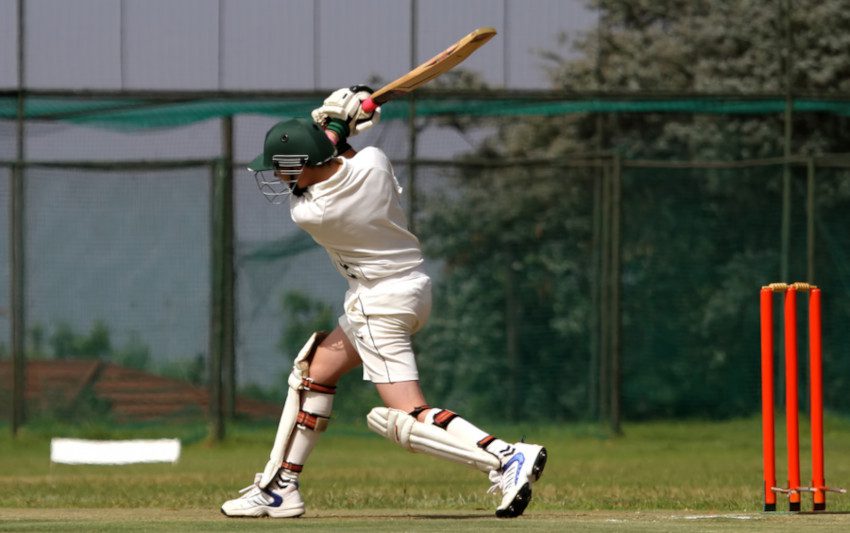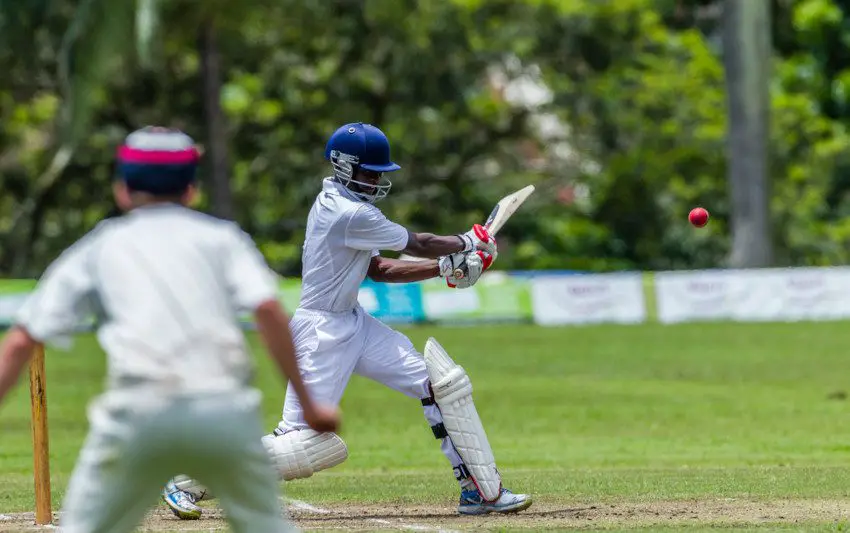Table of Contents
When you watch cricket on the television, you’ll often hear commentators talking about a good length ball but what, exactly, do they mean?
What is a Good Length Ball?
A good length ball is a delivery in cricket which hits a certain area of the pitch that makes it difficult for the batter to score runs.
The exact point of a good length will depend on a number of factors such as the bounce and pace of the pitch and the speed of the bowler.
Cricket Pitch Good Length Area
A good length ball is one that hits the pitch on the point between a short length and a full length. As we’ve seen, the exact measurements can be dependent on conditions, but a good length will generally fall at around six to eight meters from the stumps.
That is the general measurement for the quicker bowlers. For the spinners, a good length is a little fuller at around three to four meters.
In terms of direction, a good length will be on middle stump, off stump or just outside off stump. The bowler wants the batters to be playing at the ball rather than leaving it to pass harmlessly through to the wicket keeper.
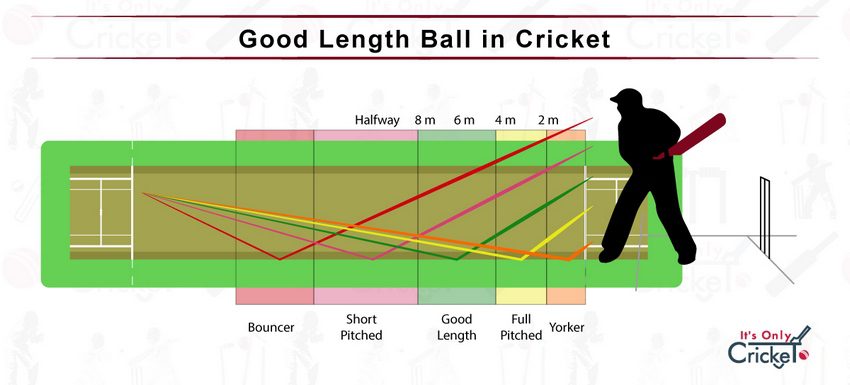
How to Bowl a Good Length Ball?
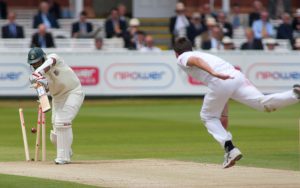
A bowler would need to quickly assess where a good length should be. Remember that the area can vary depending on the conditions. When the ball approaches the batter, it should arrive at somewhere between knee and hip height.
It’s neither too full nor too short so that the regular attacking strokes are difficult to play.
How to Bowl – Guide & Tips
Once the spot has been established, it’s up to the bowler to keep hitting that good length. Practice in the nets can help to a great extent. In these situations, the bowler can put a marker down – it could be a cone or even a coin or a coloured handkerchief. Bowling extensively to this type of equipment will help you to execute good length deliveries in a match situation.
It will also help to focus on that area of the pitch as you run into bowl. If you watch professional cricketers on the television, they have a tendency to stare at the wicket as they release the ball. By doing this, you can concentrate on the target as you enter the release phase. This is about visualisation and imaging where, on the wicket, the ball will pitch before you release it.
Of course, you won’t be able to place a target on the wicket when you are in a match situation, but the practice that you put in will have been invaluable. You can still focus on the wicket – there may be a footmark, a crack or a green patch of grass that will act as a natural aid as you let go of the ball.
Types of Bowlers that can Bowl Good Length Deliveries
All types of bowlers can send down good length deliveries but it can be more effective for the seamers. At a faster pace, there is less time to react and little that the batters can do to counter the effects of a good length ball.
Any seam movement that the bowler gets from the wicket can also make it difficult for the batter.
For spin bowlers, a good length can work but it is more of a defensive ploy. Any spin that the bowler can get is likely to be more effective when the ball is pitched further up.
Highest Good Length Percentages by Bowlers
Mohammad Asif
Current statistics show that Pakistan’s Mohammad Asif has returned the highest percentage of good length balls in test cricket. Asif was a competitive seam bowler with some good pace in his youth, and he finished his career with 106 wickets from 23 matches.
He bowled 5,171 balls in that time, and 59.5% of them were of a good length. It was unfortunate that there was a lot of controversy surrounding Mohammad Asif, as he would have enjoyed a much more prolific career if he had been able to avoid it.
Ryan Sidebottom
England’s Ryan Sidebottom was a left arm seam bowler who was very effective in his second spell in test cricket. He didn’t have any great pace, but he was excellent at hitting a good length and letting the ball do the work.
Sidebottom claimed a test hat trick and was a productive bowler, especially in English and New Zealand conditions, where he was aided by swing and seam movement. He claimed 79 test wickets in 22 games, with best figures of 7/47.
Ryan Sidebottom bowled 4812 balls in his test career, and the statistics show that 59.1% of them were of a good length.
Chaminda Vaas
Chaminda Vaas’ statistics suggest that he is the best of the faster bowlers that Sri Lanka has ever produced. Only two spinners sit above him in his country’s list of leading test wicket takers.
Vaas picked up 355 wickets in 111 tests. He bowled 23438 deliveries, and a high percentage of those were of a good length. That nagging length and subtle swing and seam movement helped Chaminda Vaas to become an effective wicket taker, even in unhelpful conditions on the subcontinent.
It’s also interesting that the bowlers who deliver a higher percentage of good length deliveries in test cricket also tend to have lower economy rates. This backs up the theory that a good length ball is difficult to score runs from. If a batter isn’t scoring, they are more likely to take risks.
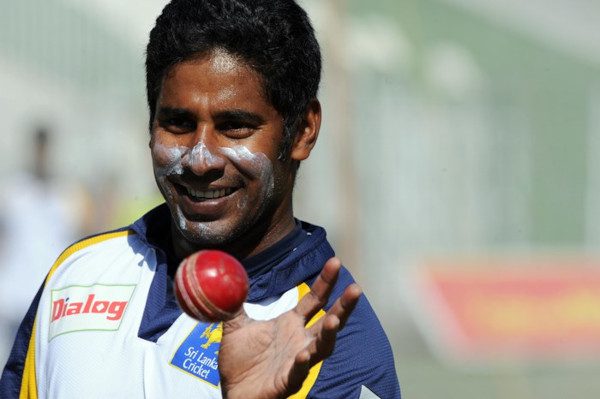
How to Hit a Good Length Ball in Cricket?
The batter’s approach to a good length ball can vary on a number of factors. Are they happy just to defend? Have they been at the crease long enough to improvise and risk an attacking stroke?
Does the position in the game mean that the batters should be looking to score quick runs? Here are some options for those who are struggling to deal with the good length ball.
Is it Difficult to Hit Good Length Balls?
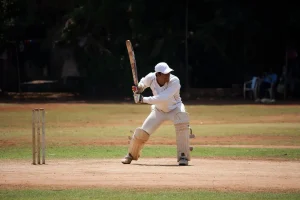
It certainly is difficult for the batter to hit a good length ball. If we think about attacking shots, they are all dependent on where the ball pitches.
If the ball is too full, we can play an attacking shot, such as the drive or the sweep. If the ball is short, the pull or the hook become options.
There is no attacking shot that comes naturally to a full length delivery, so the batter will need to improvise.
Shots against Good Length Deliveries
In most cases, the best shot to play against a good length delivery will be a defensive one. A forward defensive will simply hit the ball back down the pitch. There is no likelihood of a run being scored, but the batter has protected their wicket.
If the ball is outside off or leg stump, the batter also has the option of leaving the delivery alone.
This defensive shot is a good option in test matches and other first class cricket where the aim for the batter is to wait for the bad delivery. It’s not so important to look to score runs from a good length ball.
The problems start to occur in short form cricket. In T20 in particular, batting sides don’t always have the luxury of being able to defend deliveries. There is a desire to score runs from every ball so what can batters do in this situation?
How to Hit – Guide & Tips
A batter doesn’t have to stay in their crease, and use of the feet can counter the impact of a good length ball. By moving forward and getting to the pitch of the ball, the batter can turn a good length delivery into one that is overpitched.
This is easier to carry out when facing the spin bowlers. The slower pace means that the batter may detect a good length ball when it leaves the bowler’s hand and they may have enough time to move their feet and get to the pitch.
With the quicker bowlers this is obviously much harder. There won’t be time to move after the ball is released so a certain amount of premeditation is required. This can be dangerous as the bowler could deliver a short ball, so there is an element of risk.
One way in which to counter this is to stand outside of the crease at the point of delivery. This method could turn a good length ball into one that is overpitched.
Another option for batters is to stand deeper in their crease. This action could potentially turn a good length ball into one of shorter length and they may be able to play an attacking shot such as a pull or a back foot drive.
Conclusion
As a batter, if you want to score runs from a good length ball then you’re going to need to improvise. If you stay in your crease, it’s hard to play anything other than a defensive shot. There’s also the issue of premeditation. If a bowler is sending down a series of good length balls, they may be easier to predict. As a batter, you could move down the pitch with greater certainty, of you could prepare to play a ramp shot to the quicker bowlers.
The problems with this approach will happen when the good length ball doesn’t follow. You might receive a bouncer, which will be much harder to play when you have moved down the wicket. It is, however, important to improvise and premeditate as these actions put the pressure back on the bowlers. They can’t simply keep sending good length balls down to you, and they will now have to vary their deliveries.
As a bowler, the good length ball can be a useful weapon. If the batting team’s run rate dips, it can build pressure which can lead to silly mistakes and poor shot selection. Having perfected the right line and length, it’s then down to the bowler to maintain it and to know when to change things if the batter is advancing down the wicket.

